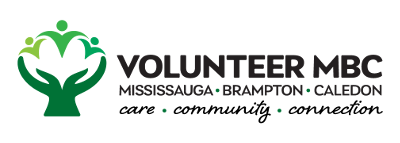Shaminda Perera, MEd.AE. | February 13, 2020 | Estimated 10 minutes Read
With the winds of change blowing in the ‘Social Purpose Sector’, are your sails strong enough to handle it? I use this analogy specifically to highlight that these winds are blowing, and we cannot ignore them. Our efforts are better directed to strengthen and trim our sails to stay on course. This article is the first on a ‘Service Excellence’ series, and its purpose is to encourage you to reflect on the need and the urgency in our sector to view Service Excellence from a holistic and organizational culture perspective.
So, what are these winds of change and how are they changing the Social Purpose Sector? I see four primary platforms that create rapid change in the sector; (1) Affordability, (2) Augmentation, (3) Agility, and (4) Accessibility.
_____________________________________________________________________________________
Peter F. Drucker
_____________________________________________________________________________________
1. Affordability: Affordability does not necessarily mean taking a hit on your financials by offering programs and services at a loss or for free. It requires a mindset shift towards designing projects, programs and services to minimize the cost impact to your operations as well as to the client relying on your services. As a ‘Social Purpose Organization’ you heavily rely on resources and funds entrusted by the community. This entails reliance on a platform of uncertainty. For example, when the funders’ priorities change – there could be uncertainty. When the economic status of society changes – there could be uncertainty. A new decade is upon us as we enter 2020, and we are already feeling the pain from such changes. Yet, we provide the community with some of the most essential services that the community cannot do without. I encourage you to reflect what your organization is doing or has done to become sustainable?
2. Augmentation: Fraught with uncertainty but still having to operate without service disruptions, we require creativity to augment programs, services and their delivery. Today, a trend is emerging towards collective impact. In a way, I consider it to be a positive step in the right direction, provided that all partners have an equitable share in the resources. Even though the Social Purpose Sector typically is quite slow to adapt, we have begun to realize the value of technology in our daily operations. Would you agree if I say that a scarcity of resources provides the best opportunities for Social Innovation?
_____________________________________________________________________________________
“Innovation is about being aware of what resources are available to you and coming up with new applications for them.”
Creating the Culture of Creativity in Social Purpose Organizations, Stuart Jansen.
_____________________________________________________________________________________
3. Agility: The biggest contribution technology has made to humankind is placing knowledge and information at our fingertips. This affords us an opportunity to continually learn and grow. At the same time, continuous learning and growth accelerate the rate of change. As a result, the Social Purpose Sector must cope with an agile environment and more speed. Does this agility build anxiety, or could we consider it as an opportunity to explore embedding agile project management principles in our organizational, project, programs and services designs?
How do we strengthen and trim our sails?
With the ‘Service Excellence Blueprint’.
Amidst rapid change, a Social Purpose Organization’s ability to establish a Service Excellence culture will determine how well the organization is staying on top of change. Nurturing a culture of Service Excellence requires an organization wide approach. It is a top-down, bottom-up, lateral, diagonal, frontline, supportive, administration, and leadership effort. To help you with this effort, Volunteer MBC has stepped in and promotes a model called the ‘Service Excellence Blueprint’. The Blueprint is a tool with 15 components aimed at facilitating Social Purpose Organizations in evaluating, strategizing and designing initiatives which help your organization foster a culture of Service Excellence. The components of the Blueprint will be outlined and explored in the articles that follow.
A culture of Service Excellence demonstrates to the community that you are on top of rapid change and capable of sustaining your mission. Be the flagship that shows the fleet how to trim the sails; not the vessel that is being blown onto the rocks. It’s no secret that service Excellence builds trust, credibility and reputation.
The next article in the series will look at the significance of Service Excellence for your stakeholders. Until then, how are you trimming your sails?
